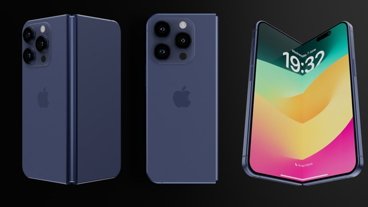VESA has published the DisplayPort 2.0 video standard encompassing up to 16K displays — and it uses USB-C and Thunderbolt 3 to do so.
VESA announced the DisplayPort 2.0 video standard, the first major update to the DisplayPort standard since March 2016, increasing data bandwidth performance up to three times more than the previous version of DisplayPort 1.4a.
DisplayPort 2.0 is backward compatible with previous versions of DisplayPort and includes all the key features of DisplayPort 1.4a, such as visually lossless Display Stream Compression, HDR metadata transport, and Forward Error Correction.
Utilizing the Thunderbolt 3 physical interface layer, DisplayPort 2.0 boosts the data bandwidth and promote convergence across industry-leading IO standards.
These new data rates will facilitate multi-stream transport of DisplayPort 2.0 devices for a single DisplayPort on the source device, driving multiple displays either via a docking station or displays that can be daisy-chained. It will also allow for simultaneous higher-speed USB data transfer without compromising display performance.
DisplayPort 2.0 also supports resolutions up to 16k, higher refresh rates, HDR support at higher resolutions, improved support for multiple displays, and improvements to augmented and virtual reality displays.
Specifically, single-display resolutions are 15260x8460 at 60Hz with compression, or 10240 x 4320 at 60Hz with compression. Daisy-chaining displays allows for two 8K displays at 120Hz, or three 10K displays at 60Hz, all with Thunderbolt 3. Using only two lanes with a non-Thunderbolt 3 USB-C cable, DP Alternate Mode allows for three 4K displays at 144Hz, two 4K x 4K for virtual reality at 120Hz, or three 2450 x 1440 displays at 120Hz.
According to the VESA press release, the first products incorporating DisplayPort 2.0 are projected to appear on the market by late 2020.
 Amber Neely
Amber Neely








 Marko Zivkovic
Marko Zivkovic

 Malcolm Owen
Malcolm Owen


 Christine McKee
Christine McKee



-m.jpg)






23 Comments
While this is nice, and Anandtech has a very detailed report about it, there is something that worries me. Intel has released the thunderbolt spec to a royalty free group. While this seems good, as we can see by this use of it here, my question is what it means for the future of the TB spec.
going back to the beginning, Intel stated that in ten years TB would be at 100Gb/s. It’s still at 40. We know all about the cable “problem”, which DisplayPort now shares. But that problem can be overcome with amplified cabling. At a cost, of course. But are we now at the end of the TB advance> with Intel giving the license out for free—no more charging OEMs for ports, does that mean they’re letting go of TB altogether? Nobody knows that outside of Intel right now.
16K! Does that make the new modular Mac Pro with its 6K monitor obsolete even before it's released?
I'm interested in Mel's comments. His questions seem reasonable but they shouldn't affect any purchasing decisions that I will make. I don't have a negative impression of TB yet, but I do have a negative impression of USB-C with all of its complexity and different connector types. Maybe Intel can take the best of both and merge them into a single cable called USTB.
It’s my understanding that TB4 is final and will be at 80gb/s. It’s a fantastic technology and a superior tech with lower overhead than USB. I really hope Intel does not do something stupid and kill the tech. They have been screwing up as of late.